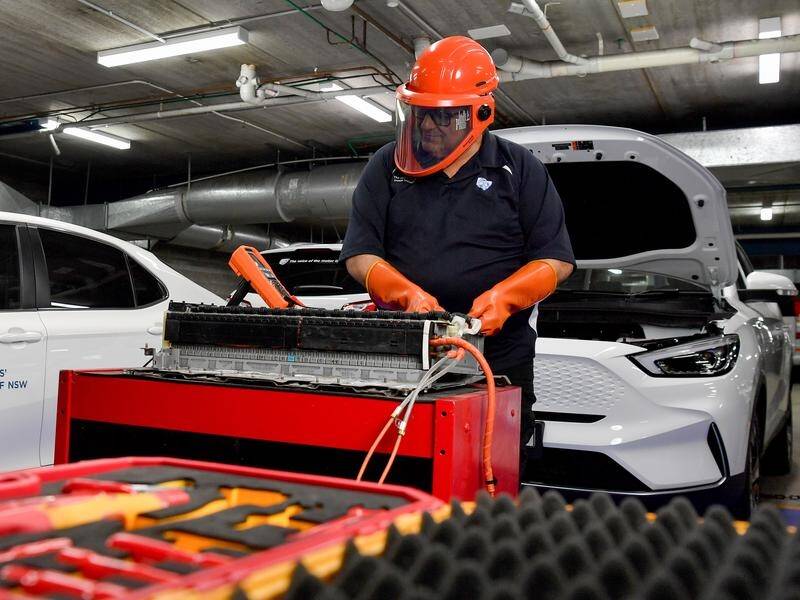
By the end of the decade, Australia’s stockpile of depleted electric vehicle batteries will weigh almost as much as the arch of the Sydney Harbour Bridge.
Just 10 years later, that figure will rise to 360,000 tonnes of batteries – or more than six times the weight of the steel icon.
New research from the University of Technology Sydney this week revealed the extent of the issue facing Australian regulators if they failed to take action to recycle the power source.
But experts say the same electronic waste could represent a huge financial and ecological opportunity for Australia if the country establishes and funds a comprehensive national recycling scheme.
As a discussion paper into the issue is circulated among industry players, some say the nation will need to accelerate its plans to take full advantage of the electric vehicle shift and avoid safety risks.
The research, conducted by the university’s Institute for Sustainable Futures, was among the first to put a figure on electric vehicle battery waste in Australia.
Libby Chapman, chief executive of the Battery Stewardship Council, which is tasked with creating a recycling scheme for large batteries, says the study’s initial findings demonstrate the scale of the challenge.
The research estimated there were more than 100,000 electric vehicles on Australian roads, but their rising popularity would lead to more than 600,000 tonnes of batteries powering electric cars by 2030 and more than 2.5 million tonnes being in use by 2040.
If those batteries were not recycled at the end of their useful lives, Ms Chapman said, Australia would face an enormous safety risk.
“It’s a major stockpiling issue which could have significant impacts on property and public health,” she said.
“If stockpiles are not well managed and are subject to extreme heat or are damaged, lithium-ion batteries are prone to thermal runaway which will have them catch fire.”
The potential problem was singled out in the National Electric Vehicle Strategy, which highlighted the need for a large-format battery recycling and reuse scheme.
Ms Chapman said the basis of a scheme had been outlined in the discussion paper, which posed a series of questions to electric vehicle manufacturers, industry bodies and research groups.
It called for opinions on what types of vehicle batteries should be recycled, whether some batteries should be repurposed and for players to pinpoint areas in which recycling could go wrong.
“We probably have enough capacity to deal with the waste stream right now but … we do need to have processing in place before 2026 or 2027,” Ms Chapman said.
But Curtin University professor of sustainability Peter Newman said the country needed a recycling plan in place immediately.
The adoption of zero-emission vehicles would continue to outpace expectations, he said, and delaying risked missing an important opportunity.
“We need some serious regulation on lithium-ion batteries now so we don’t end up being the world’s worst recyclers,” he said.
In its submission to the National Battery Strategy, the Clean Energy Council said recycling EV batteries presented a substantial economic opportunity to recover in-demand materials such as lithium, nickel and cobalt.
Between 85 and 95 per cent of lithium used in a vehicle battery could be recovered during the recycling process.
Prof Newman said the process could deliver a huge economic boost for Australia and a way to benefit from mineral extraction without causing environmental damage.
“We led the world on plain packaging of tobacco products – we regulated that and everyone copied us,” he said.
“Can we do the same with these critical minerals? We know they’re critical because we mined them and we know how much they’re worth.”
Recovered minerals could also be key to producing more electric vehicles in the future, with the European Union proposing the mandatory use of recycled lithium, cobalt and nickel in batteries from 2030.
Federal Chamber of Automotive Industries communications director Peter Griffin said the current discussion on vehicle recycling could go further than just batteries.
The group, along with the Motor Trades Association, is conducting a study into ways to recycle other parts of the roughly 700,000 vehicles retired in Australia each year.
“The study is taking into account all elements of the motor vehicle, from metals and glass through to plastic, textiles, and current and future drive-trains,” he said.
“The introduction of EV batteries will need to be treated alongside all of the other issues as the study continues.”
Australian Associated Press
